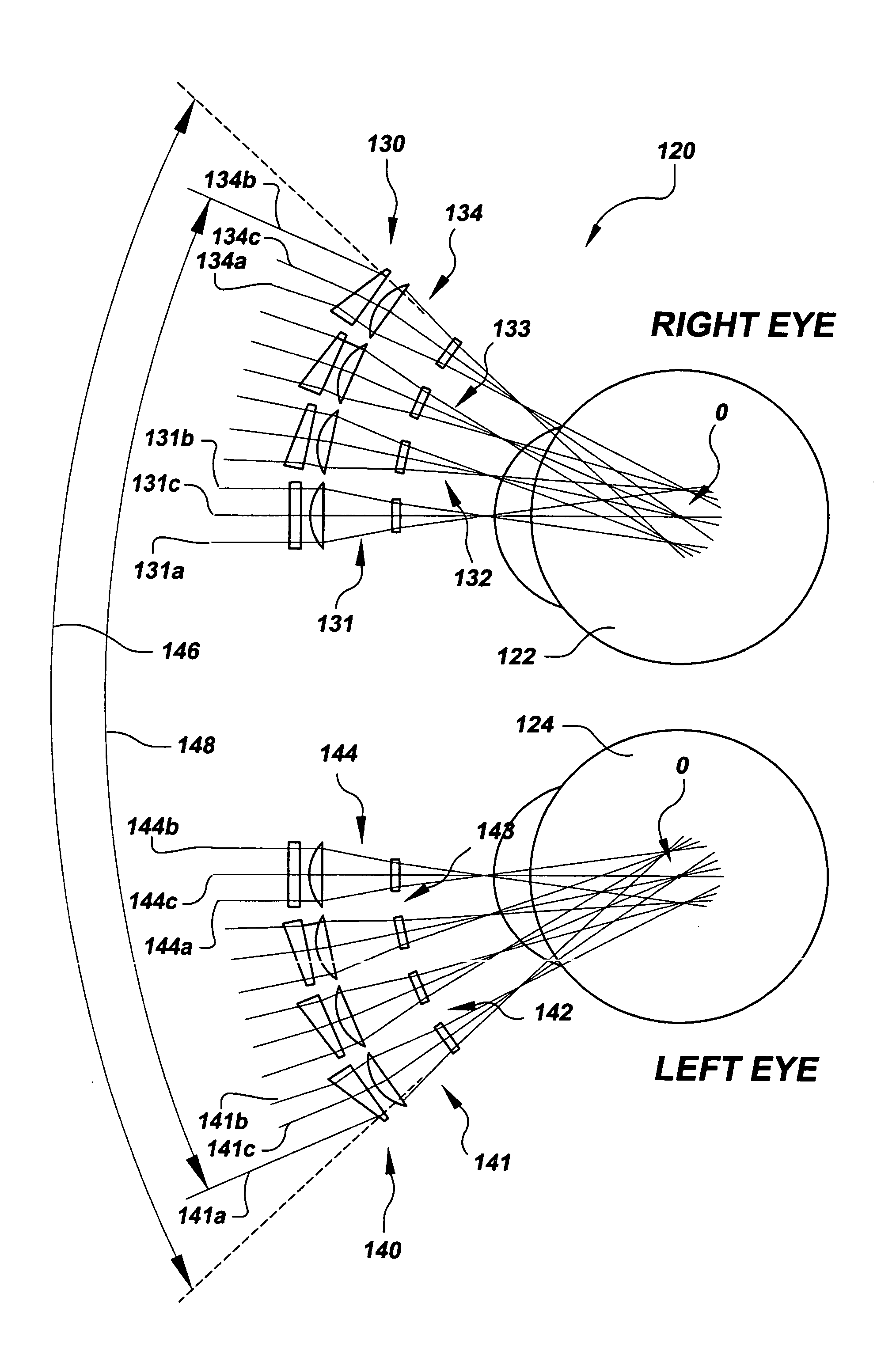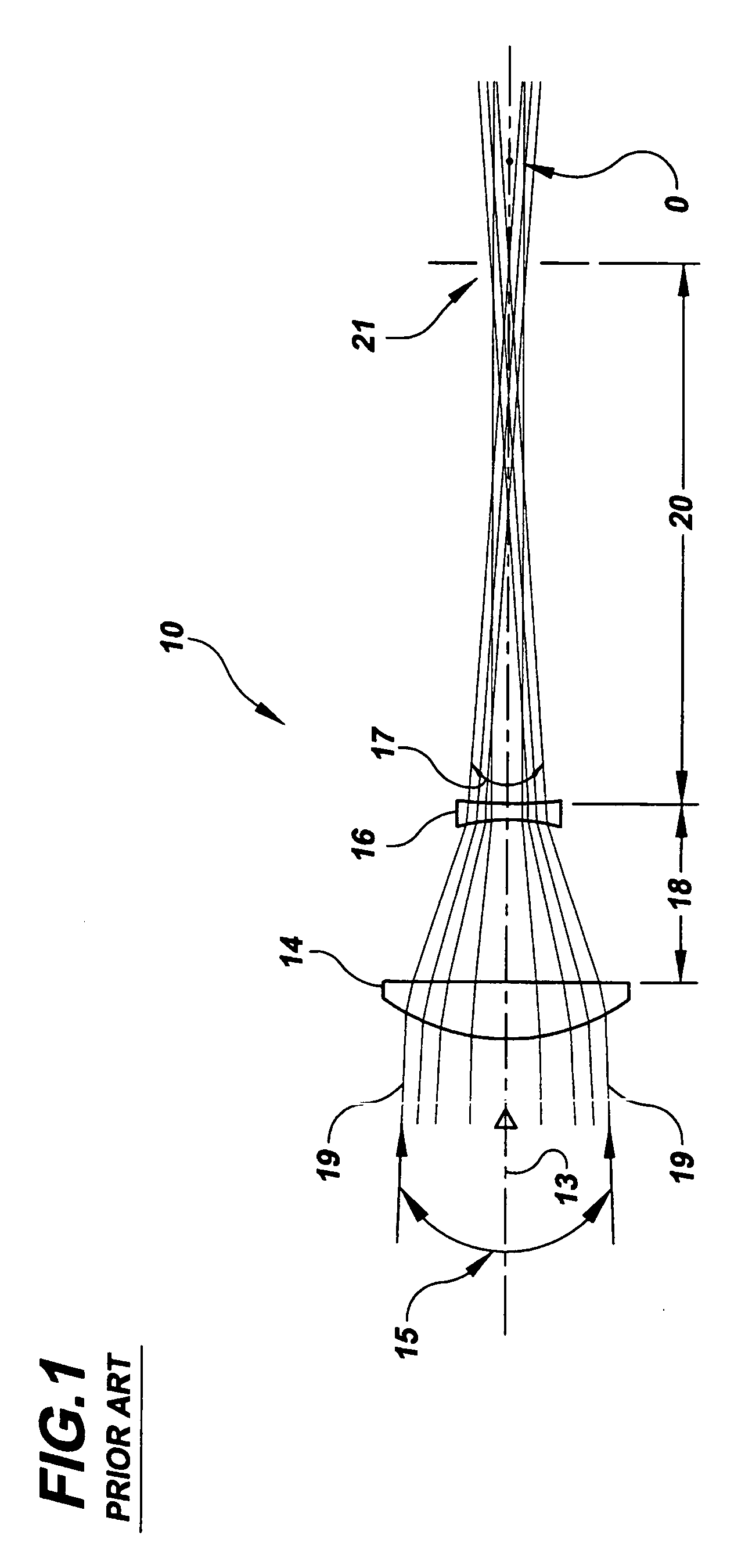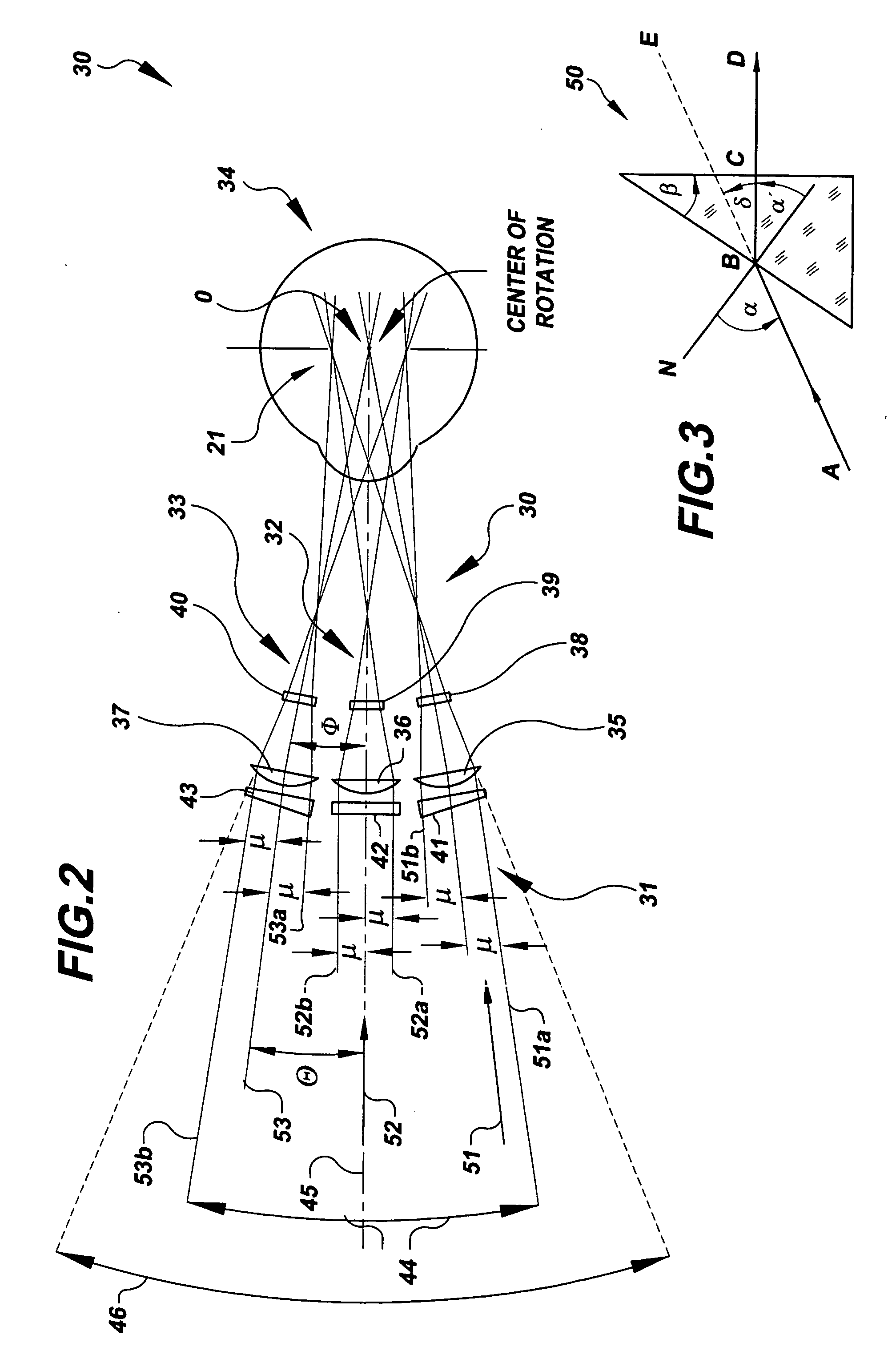Devices and methods for providing wide field magnification
a wide field magnification and device technology, applied in the field of optical devices, can solve problems such as deviation from perfect contiguity of fields, and achieve the effect of limited optical correction
- Summary
- Abstract
- Description
- Claims
- Application Information
AI Technical Summary
Benefits of technology
Problems solved by technology
Method used
Image
Examples
Embodiment Construction
[0039]FIG. 1 is a schematic diagram of a typical prior art lens set 10 coupled to a human eye (not shown) having an iris, that is, an aperture stop, 21. Lens set 10 may be typical of a lens arrangement that may be used for telescopes and telemicroscopes and may be referred to herein as a “telescopic lens set.” As is typical, lens set 10 includes an objective lens 14 and an ocular, or eye, lens 16. As is known in the art, objective lens 14 collects light, as indicated by an axial collimated pencil of light rays 13, from a distant object (not shown), and converges that light to a point or focus at the second focal plane lens (not shown) of the objective. The objective lens 14 also collects collimated pencils of light from both edges of the FOV 17. Light pencils 19 are each focused as points in the second focal plane of objective lens 14. Ocular lens 16 intercepts the converging pencils of light before they reach the focal plane of objective 14 and recollimates the pencils with magnifi...
PUM
 Login to View More
Login to View More Abstract
Description
Claims
Application Information
 Login to View More
Login to View More - R&D
- Intellectual Property
- Life Sciences
- Materials
- Tech Scout
- Unparalleled Data Quality
- Higher Quality Content
- 60% Fewer Hallucinations
Browse by: Latest US Patents, China's latest patents, Technical Efficacy Thesaurus, Application Domain, Technology Topic, Popular Technical Reports.
© 2025 PatSnap. All rights reserved.Legal|Privacy policy|Modern Slavery Act Transparency Statement|Sitemap|About US| Contact US: help@patsnap.com



